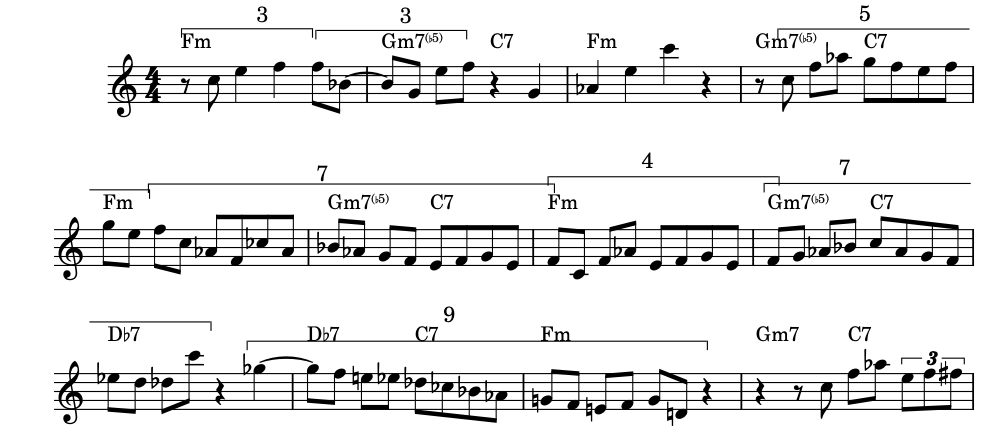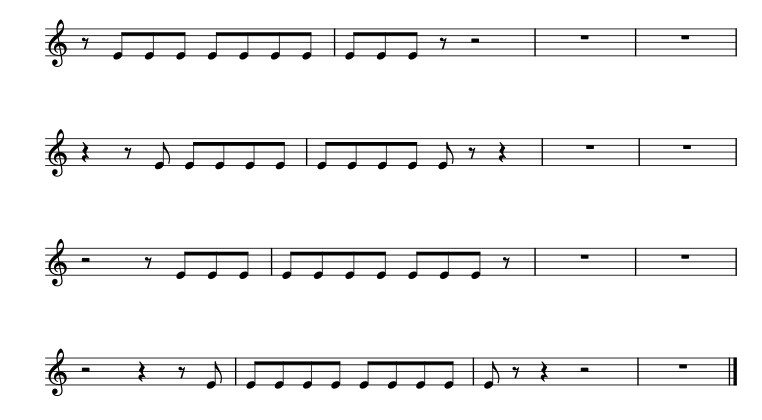For the last couple of weeks I have been working on Sonny Rollins's solo on "Strode Rode" from his 1956 album Saxophone Colossus. This is a solo I have loved ever since I was a kid. Even though I have probably heard it a hundred times, going back to it now to transcribe it sounds as fresh as ever to my ears. A lot is going on in this solo.
In my view, there are three things to get out of transcribing a solo.
- The ear training of doing the transcribing.
- The timing and feeling that comes from practicing the solo.
- Analyzing and coming up with exercises based on the solo.
1 and 2 has a lot to do with inexplicit knowledge. You learn things just by being immersed in the solo. The saxophonist Dave Liebman called it "sitting with the master" in his article on transcribing. When jazz begun, it was not taught academically at institutions. It was something you learned by being around people who knew about it, the "masters". When jazz masters are not around, the next best thing in Liebman's view is transcribing, because it involves such deep listening to particular performances.
I love Sonny's playing, but can't be around him. Listening and going deep into a few of his solos still goes a long way. In fact, it might be that the person studying learns a thing or two that the soloist didn't know explicitly. This was the case with the jazz theorist Gunther Schuller who analyzed motivic development in Sonny Rollins. Apparently after reading that Sonny became self-conscious and had a hard time playing for a while. He didn't think about motives at all, he just played!
Today I want to focus on one thing that I found very interesting with this solo in general. It's got to do with rhythm. This would be the third thing that is valuable when transcribing.
Jazz Rhythm
For context, jazz rhythm is not based on counting 1234 1234. It's rather a string of say eighth notes that are accented asymmetrically.

In a way the accents above could be analyzed polymetrically: first a bar of 5/8, then 2/8, 3/8, 2/8, 4/8. Thinking about it in that way catches something important about jazz rhythm. Here is the pianist and educator Hal Galper explaining it.
Sonny's Rhythm
With that context in mind let's listen to the first chorus of Sonny's solo.
Timestamped at start of solo
Now, if you just listen a few times to the saxophone you might notice a bit of a rhythmical weirdness, try counting it for example and you will notice that is somewhat difficult. Even though it's a straightforward 4/4 with a walking bass. Let's take a look at the beginning of my transcription:

In my analysis of the first 12 bars (0:38-0:49) He is playing a wide array of phrases in different time signatures superimposed on 4/4. The idea is that if we take the phrase that starts on bar 8 it would look like this in 5/4

As we can see it lands on the first beat of the second bar. Similarly, all the phrases I have bracketed with numbers could be thought of as phrases in the 7, 4, 9, 3, etc.
I think this is an illustration of Hal Galper's remarks about jazz rhythm. Sonny is not playing in 4/4, he is making up rhythms that happen to be on a song that is in 4/4. Doug Watkins on base is playing in 4/4 and it is exactly this tension between them that creates part of the magic.
As a side note, when analyzing solos like this I am struck by the complexity. This to me refutes the idea that there is anything random with jazz improvisation. It's impossible to play such complex phrases as this, in perfect time, without having a supreme command of your instrument and music in general. Composing on the spot is IMO a better term for what is going on with great jazz improvisation. I agree with Gary Bartz on this. That also means that jazz education should not be about "playing whatever, as long as it's improvised it's good". It might be how it feels to Sonny when he was playing this, but he couldn't do it without a great deal of practice.
Takeaways for practice
The way to build your style in jazz is to identify things you like and practice them. No two people will enjoy the same things, so zooming in on your inclinations will likely create something unique.
So, here is an exercise based on Sonny's asymmetrical phrases. It's basically about playing phrases in different time signatures, superimposed on 4/4.
- This song is mostly minor 2-5-1s on repeat. The phrases are then perfect for 2-5-1 practice in different keys. Here is an example with the phrase in 5:

Take it through the keys and you've got a hip 5/4, minor 2-5-1 lick.
- Make a general exercise out of the rhythms of his phrases.
Here the rhythm from the phase above is isolated, and then displaced one quarter note every four bars.

Practice only saying these rhythms and then playing a chorus of any song, but only using these rhythms.
Hopefully I managed to showcase some of the beauty and ingenuity in Sonny's playing here.
Thanks for reading!